Euphorbia information
NB All Euphorbias exude a white milky sap if damaged. This sap can irritate the skin.
The family Euphorbiaceae is the sixth largest family of flowering plants on the planet. The genus Euphorbia makes up by far the greatest proportion of the family, and with 2160 known species it is the second largest plant genus in the world. Euphorbia species can be found growing on every continent except Antarctica, exhibiting a huge range and variety of forms and plant types, from annuals and biennials to leafy perennials, woody shrubs and trees, and many succulents. Of the hardy leafy perennials that we grow in our gardens, most come from Europe, the Middle East and temperate Asia including the Himalaya region. Many are evergreen and provide excellent foliage colour and interest throughout the winter.
Euphorbia milii. A tender succulent from Madagascar. Euphorbia polyacantha.A tender succulent from Ethiopia.

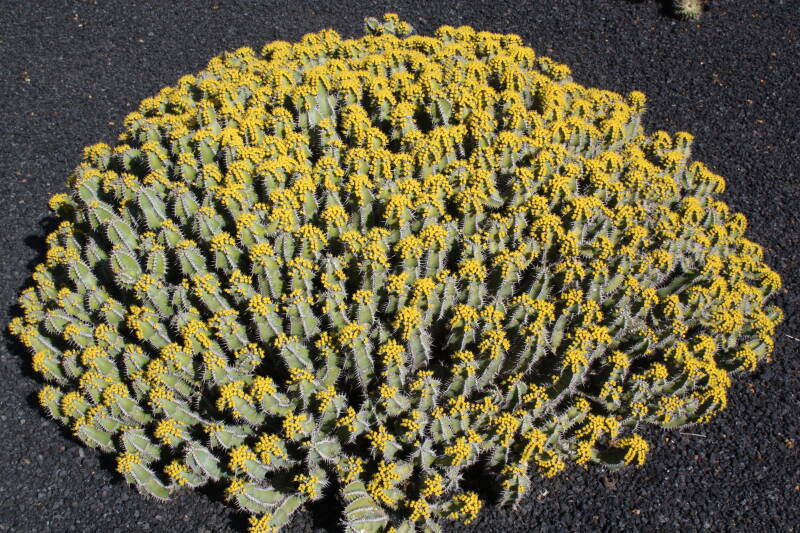
Leaves
Many succulent species do not have leaves but one of the attractions of the temperate hardy garden forms is the foliage. The oblong or lance shaped leaves can be anything from 1 - 30 cm long depending on the variety. Green is the predominant colour but some species have glaucous blue, pink or maroon leaves. There are a number of variegated selections with green complimented with cream, white, yellow or pink. About half of the garden forms are evergreen so they will give colour and interest throughout the winter.
Euphorbia Redwing (February) Euphorbia rigida Sardis (January) An evergreen hardy herbaceous perennial garden hybrid. An evergreen hardy herbaceous perennial from Turkey.
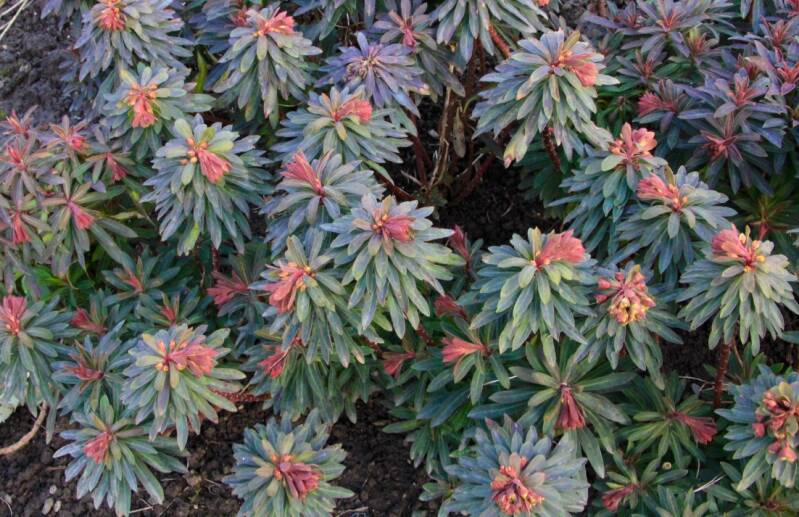

Flowers
All Euphorbia flowers are unique in having neither petals nor sepals. The main floral colour comes from a modified leaf known as a cyathium leaf (but commonly called a bract). These colourful leaves do the job of the petals. They attract insect pollinators and can be lime, yellow, gold, orange, red or white in colour depending on species and varieties.The main flowering period is April to June but there are species that flower throughout the summer.
Euphorbia pulcherrima. Common name - Poinsettia. A tender perennial shrub from Central America.

Euphorbia palustris. A hardy deciduous perennial from Russia.

Euphorbia marginata. A half hardy annual from North America.
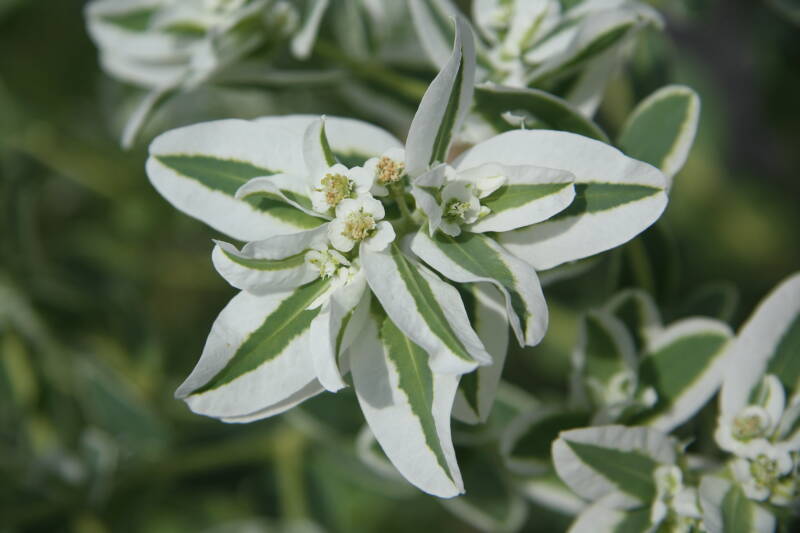
Nectaries
The reproductive part of each flower also contains nectar rich glands (each called a nectary), which provides the insect pollinator’s reward. These nectaries can vary in colour from species to species and can be yellow, orange, red, maroon, brown or black. In some species – most notably E mellifera, the nectaries give off a strong sweet perfume.
E mellifera. A half hardy evergreen shrub from the Canary Islands. E x martini. A hardy evergreen perennial from France.
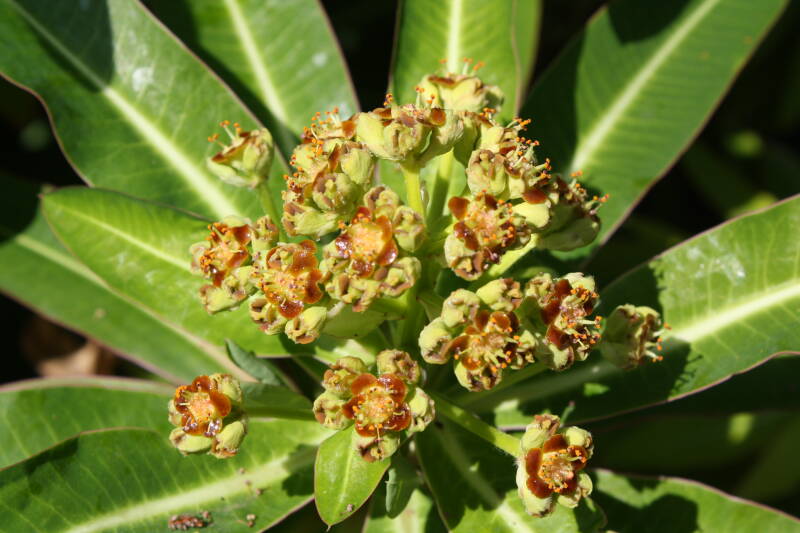
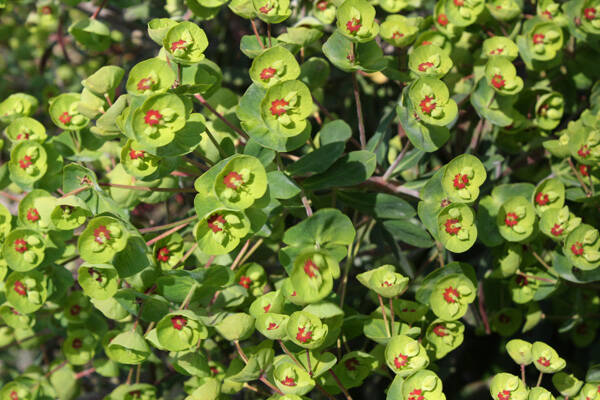
Seed Pods
After pollination, the ovary swells and ripens into a three-sectioned fruit capsule, each section containing one seed. These seed capsules are roughly spherical in shape but can vary considerably from species to species. They remain on the plant drying and shrinking until they burst open with an audible crack and propel their seeds in all directions.
E myrsinites. A hardy evergreen perennial E epithymoides. A hardy deciduous perennial
from the Mediterranean. from southern Europe.


Cultivation
Growing Euphorbias in the garden is on the whole quite easy. They will grow in most soils providing it is friable (sandy, gritty, loamy but not clay) and will tolerate a wide range of pH values. As a general rule they will be happy with some sun, shelter and reasonable drainage.
Cut back dieing top growth from deciduous forms in late autumn. Cut out all the old flowering stems of evergreen forms in early summer. Remove any dead stems from shrubs in spring and shape if necessary.
Euphorbia fragifera. A hardy perennial from the Balkans. Euphorbia Blue Haze. A perennial evergreen garden cultivar.

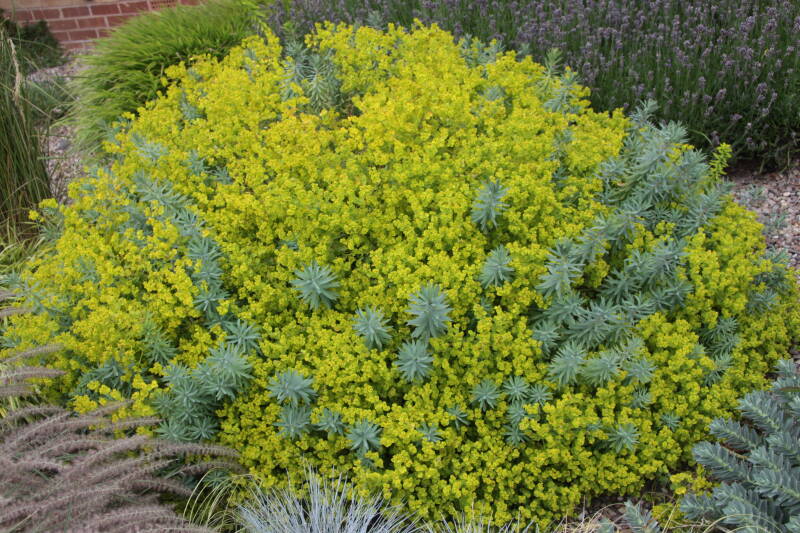


Create Your Own Website With Webador